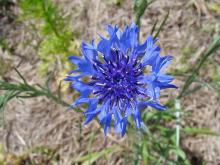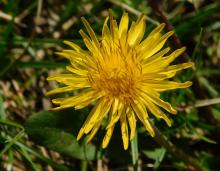Wildflowers, Grasses and Other Nonwoody Plants
Media
Species Types
Scientific Name
Vernonia baldwinii
Description
Ironweeds are tough, grayish-green, branching plants known for their fluffy-looking clusters of reddish-purple florets. They are a familiar sight on roadsides and pastures. Identify western ironweed by the bracts at the base of the flowerheads.
Media

Species Types
Scientific Name
Ageratina altissima (formerly Eupatorium rugosum)
Description
White snakeroot looks very similar to thoroughworts, but it has triangular leaf blades that are more broadly angled or rounded at the base. White snakeroot is common statewide. It’s a toxic plant if eaten, so it’s good to be able to identify it.
Media

Species Types
Scientific Name
Eupatorium altissimum
Description
A stout perennial that can grow to 6 feet tall, tall thoroughwort is a member of the sunflower family that has dull white flowers and distinctive leaves that are opposite, slender, very short-stalked, and with three quite noticeable veins.
Media

Species Types
Scientific Name
Liatris aspera
Description
Rough blazing star is fairly common and scattered nearly statewide. To distinguish between Missouri’s nine species in the genus Liatris, start by noting details of the flower structure. It’s not hard when you know what to look for.
Media

Species Types
Scientific Name
Conoclinium coelestinum (formerly Eupatorium coelestinum)
Description
Mist flower, or wild ageratum, is a vigorous native perennial bearing fluffy-looking, bluish-purple flowerheads. It looks quite a bit like the annual ageratum that is sold as a bedding plant in garden centers.
Media

Species Types
Scientific Name
Solidago spp. (23 species in Missouri)
Description
There are 23 species of goldenrods in Missouri. They can be hard to identify to species, but as a group, the goldenrods are common and nearly unmistakable.
Media

Species Types
Scientific Name
Centaurea cyanus
Description
A native of Europe, cornflower is a popular garden flower that often escapes to nearby areas. It’s used in bridal bouquets and men’s boutonnieres. Its intense blue color appears in boxes of crayons!
Media

Species Types
Scientific Name
Taraxacum officinale
Description
The common dandelion is a well-known common weed of lawns, roadsides, and other disturbed places. Originally from Europe, it occurs nearly worldwide.
Media

Species Types
Scientific Name
Pyrrhopappus carolinianus
Description
One of several native plants called dandelions, Carolina false dandelion is an annual with sulphur yellow flowers and puffy seedheads.
Media

Species Types
Scientific Name
Heterotheca camporum (syn. Chrysopsis villosa var. camporum)
Description
Golden aster can cover entire valleys with its bright yellow flowers. It blooms June through October and is scattered mostly south of the Missouri River.
See Also
About Wildflowers, Grasses and Other Nonwoody Plants in Missouri
A very simple way of thinking about the green world is to divide the vascular plants into two groups: woody and nonwoody (or herbaceous). But this is an artificial division; many plant families include some species that are woody and some that are not. The diversity of nonwoody vascular plants is staggering! Think of all the ferns, grasses, sedges, lilies, peas, sunflowers, nightshades, milkweeds, mustards, mints, and mallows — weeds and wildflowers — and many more!





















